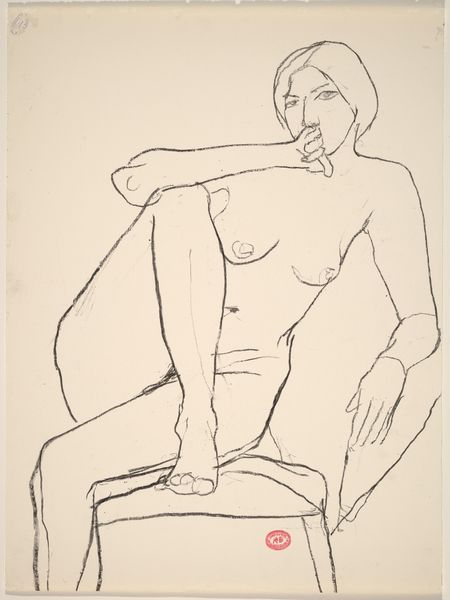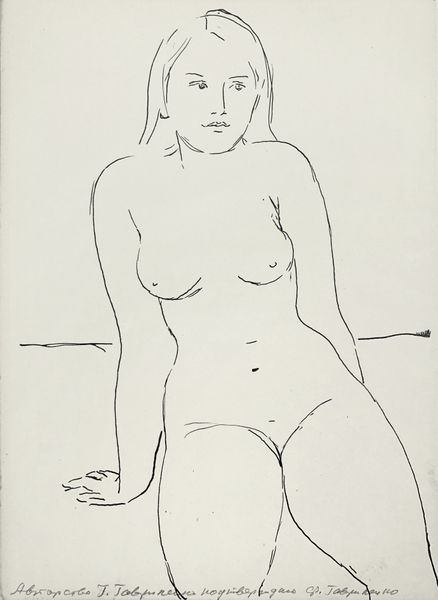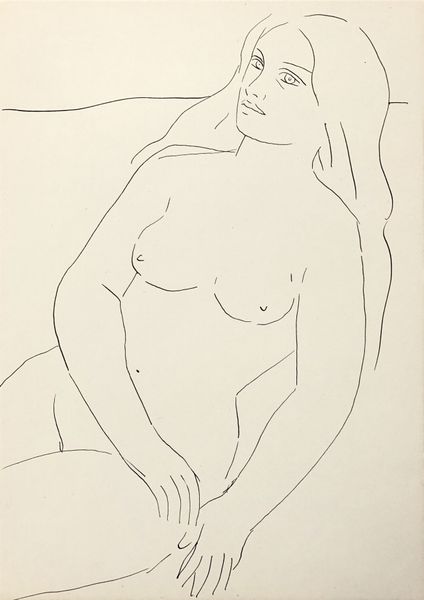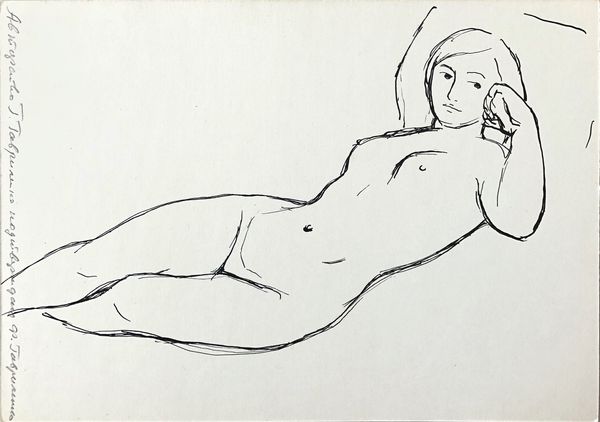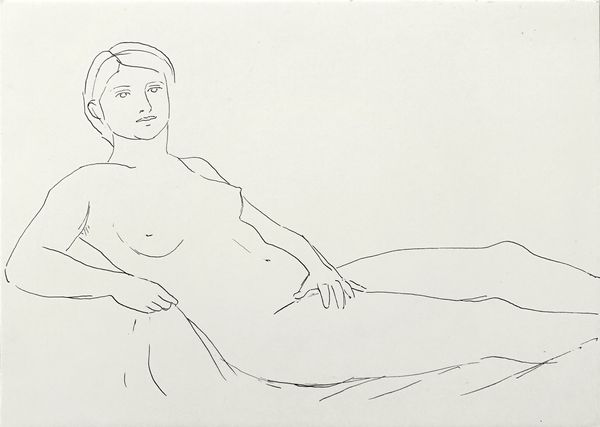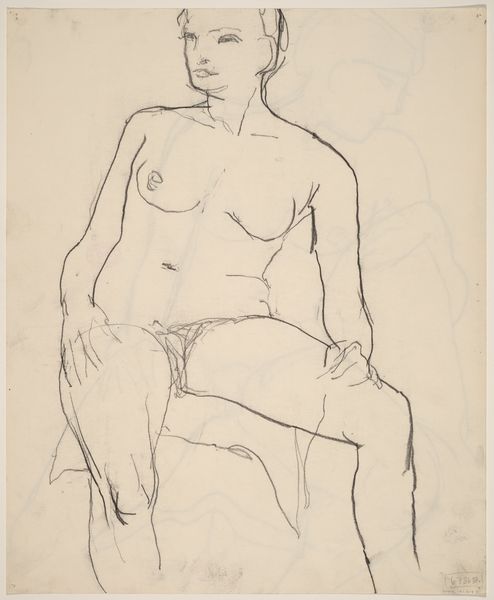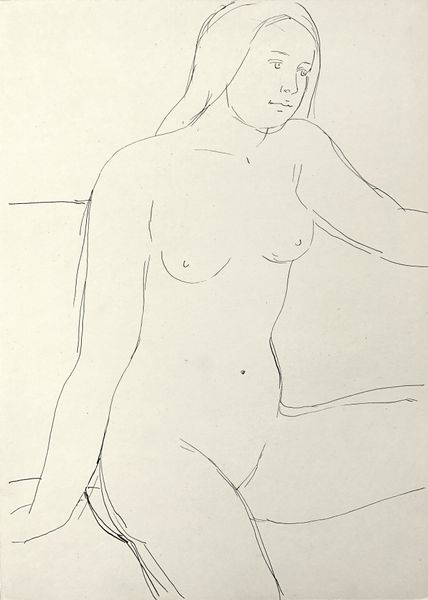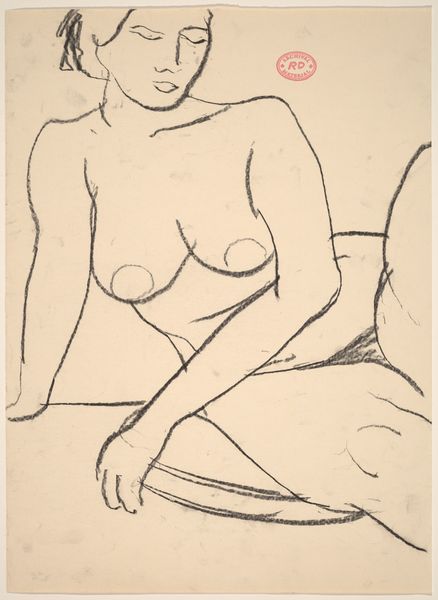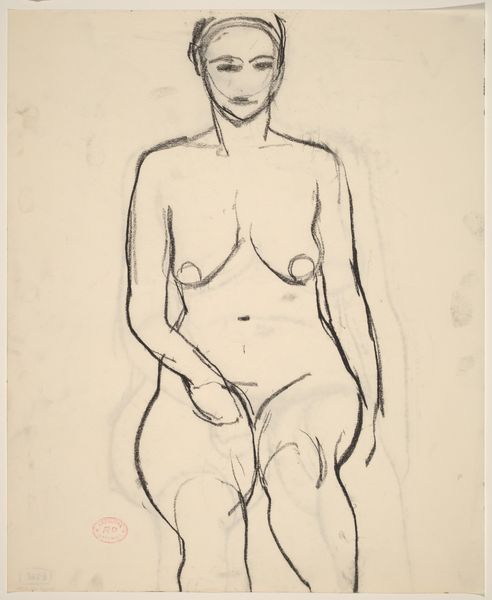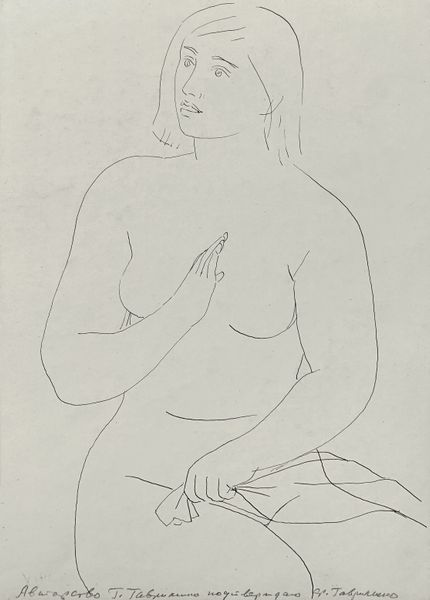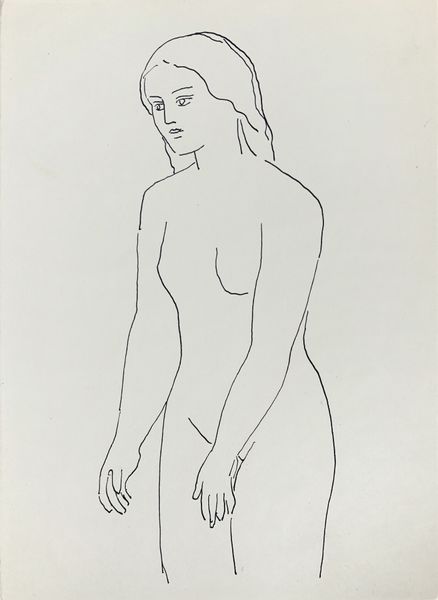
Copyright: Modern Artists: Artvee
Editor: This is Henri Matisse's "Nu assis les bras étendu," created in 1925 using pencil. It's a simple, elegant sketch. What strikes me is the economy of line; how much he suggests with so little. How do you read this piece? Curator: I see this drawing as an artifact of artistic labour, highlighting the interplay between material and process. The graphite on paper is less about depicting the female form and more about exploring the *act* of drawing. Note how the tentative, almost searching lines reveal the artist's hand – a very physical and deliberate hand. Consider the paper itself. What kind is it? Its texture would dictate how the pencil moved. Was it a cheap newsprint or a higher-quality stock, something meant to last? Editor: That’s interesting. I hadn't thought about the paper as a material in itself. So, you're focusing less on the final image and more on the... making of the image? Curator: Precisely. Where was this drawing created, and for what audience? Was it a study for a larger work? Or a work unto itself? The context informs our understanding of its materiality. We often forget the socio-economic factors intertwined with artistic production, and that can profoundly affect art. It is about more than lines; it is a dance between labor, materials and artist. Editor: I see what you mean. Thinking about the kind of paper, the availability of pencils at the time, even Matisse’s own economic situation, it all adds another layer. Thank you, that was very helpful. Curator: Indeed, considering the art within these factors opens avenues of insight beyond the merely visual.
Comments
No comments
Be the first to comment and join the conversation on the ultimate creative platform.
